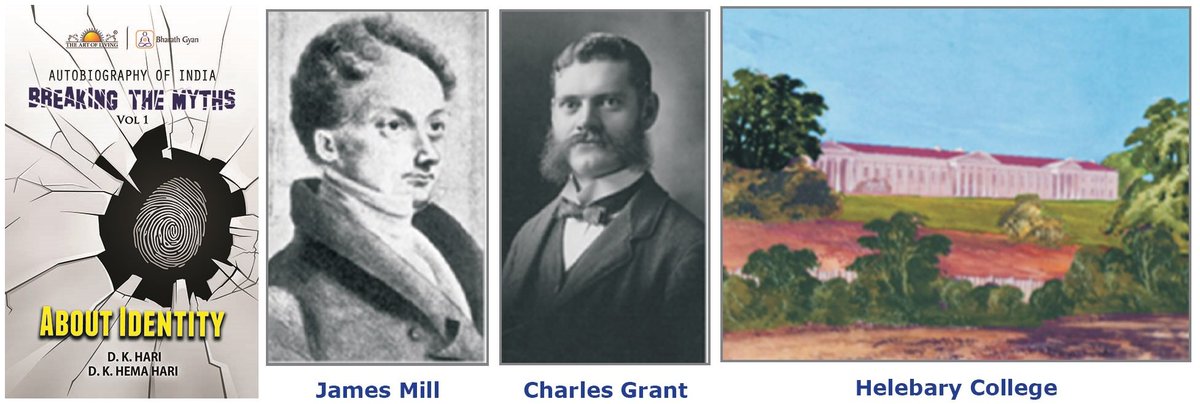The British strategized to write the history of India from a British perspective.
In 1813, James Mill and Charles Grant, wrote the “History of India”, wherein they classified most of the literature of India as Mythologies.
#BreakingTheMyths #AboutIdentity
In 1813, James Mill and Charles Grant, wrote the “History of India”, wherein they classified most of the literature of India as Mythologies.
#BreakingTheMyths #AboutIdentity

This history book formed the syllabus for the English administrators who had to graduate through Helebary College, England, before being deputed to India, so that their impressions of India would already be influenced and prejudiced, even before they stepped on Indian soil.
This book also found its way into the educational institutions of India, to complete the other task of disorienting the Indian minds.
#BreakingTheMyths #AboutIdentity
#BreakingTheMyths #AboutIdentity
Mill and Grant feared that the rich culture of India would influence their own writing. They wrote in the preface of their book “History of India” that “they did not visit India” during their effort, “lest its rich culture influence them”.
#BreakingTheMyths #AboutIdentity
#BreakingTheMyths #AboutIdentity
Therefrom started “Myth-Story of India” instead of “History of India”, which was largely a distorted account of India, rather than Mill & Grant’s own, first-hand experience of India, understanding of the ethos behind India’s historiography & writing abt it in an unbiased manner.
• • •
Missing some Tweet in this thread? You can try to
force a refresh





